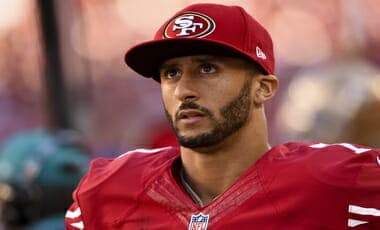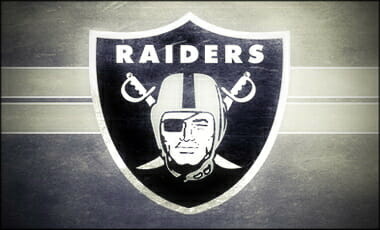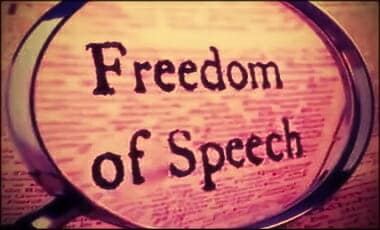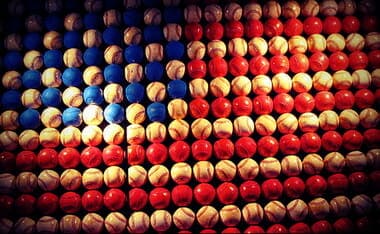Here is a short montage via THE DAILY CALLER:
Here is TUCKER CARLSON discussing the rating whores in the media:

Here is a short montage via THE DAILY CALLER:
Here is TUCKER CARLSON discussing the rating whores in the media:

A “prequel” to the flashback… and it deals with the influences of the Nation of Islam (a racist cult) on Kaepernick. DAILY CALLER noted some time ago the “swagger” of his social media:
Previously I noted that Kaepernick’s girlfriend is involved in a similar strain of Islam that Kaepernick continuously pictures on his INSTAGRAM.
Here is some background to the “Islam” that Mahmoud Abdul-Rauf was part of via DANIEL PIPES:
…An odd controversy briefly dominated the sports pages in March 1996. A player in the National Basketball Association, Mahmoud Abdul-Rauf, refused to follow the league’s rule requiring that players stand in a “dignified posture” during the national anthem. Instead, since the beginning of the 1995-96 season, Abdul-Rauf had remained seated during the playing of the Star Spangled Banner.
A black, 27-year-old former Baptist from Mississippi who had converted to Islam in 1991, he declared that as a Muslim, he could not pay homage to the American flag – which he called a “symbol of oppression, of tyranny.” He argued further that the flag directly contradicted his Islamic faith: “This country has a long history of [oppression]. I don’t think you can argue the facts. You can’t be for God and for oppression. It’s clear in the Koran. Islam is the only way.”
The NBA responded firmly, suspending Abdul-Rauf until he agreed to obey league rules. He missed one game, then capitulated. Two factors probably weighed most heavily on him: losing a cool $31,707 for each game missed, and facing wide opposition to his decision from other Muslims.
Though soon forgotten, this act of defiance raised important questions. When a successful young man earning almost $3 million a year and enjoying wide adulation talks publicly of hating his own country, something is afoot. What that might be is hinted at by a similar case a whole generation earlier, that of the boxer Muhammad Ali. After his conversion in 1960 to a form of Islam (Elijah Muhammad’s Nation of Islam), the former Cassius Clay adopted a set of intensely anti-American attitudes. Most famously, he refused to be drafted by the U.S. military, which led to the forfeit of his heavyweight title. As Muhammad Ali later put it, he stood against “the entire power structure” in the United States, one dominated by Zionists who “are really against the Islam religion.”
[….]
But there are often less happy results when a convert adopts two specific types of Islam: the Nation of Islam (the black-nationalist sect that originated in Detroit in 1930) or the fundamentalist variety (now usually known as Islamism) imported from the Middle East and South Asia. Converts to these forms of Islam are much more likely to turn anti-American.
From its inception, the Nation of Islam has promoted a black-nationalist outlook hostile to mainstream American culture and politics. “You are not American citizens,” Elijah Muhammad, its longtime leader, told his followers. He went to jail for draft evasion instead of enlisting to fight in World War II, and even forbade Nation of Islam members to accept Social Security numbers. Malcolm X, his most famous disciple, contrasted the pure evil of America with the pure good of Islam, saying that an American passport “signifies the exact opposite of what Islam stands for.” Continuing in this spirit, the group’s current leader, Louis Farrakhan, threatened some years ago to “lead an army of black men and women to Washington, D.C., and we will sit down with the president, whoever he may be, and will negotiate for a separate state or territory of our own.” On a 1996 visit to the virulently anti-American regime in Teheran, Farrakhan declared that “God will destroy America at the hands of Muslims.”
Many converts eventually leave the Nation of Islam and join mainstream Islam; those of them who become Islamists are especially likely to continue to disassociate themselves from the surrounding culture in a radical way. Even after his break with the Nation of Islam, for example, Malcolm X announced, “I’m not an American.” Similarly, the one-time radical H. Rap Brown, now known as Jamil Al-Amin, declares, “When we begin to look critically at the Constitution of the United States… we see that in its main essence it is diametrically opposed to what Allah has commanded.”…

Larry Elder’s EXCELLENT article, via LARRYELDER.COM:
Where was the angry left when Supreme Court Justice Ruth Bader Ginsburg called the national anthem protests “dumb and disrespectful”?
Let’s focus on the “dumb” part.
NFL player Colin Kaepernick, who started the protests, did so over the supposed widespread instances of police brutality against blacks. Kaepernick said, “I am not going to stand up to show pride in a flag for a country that oppresses black people and people of color. … There are bodies in the street and people getting paid leave and getting away with murder.” According to the Centers for Disease Control, since 1968 police killings of blacks have declined nearly 75 percent. According to The Washington Post, almost 500 whites were killed by cops in 2015, an average of more than one a day. Two hundred fifty-nine blacks were killed by the police. Most suspects killed by police had a weapon.
Now for some perspective.
Do you know anyone who has been struck by lightning? Neither do most people. Yet each year an average of about 300 Americans are killed or injured by lightning. That’s approximately 40 more than the number of blacks killed by the police in 2015. Is there an “epidemic” of Americans being struck and injured by lightning? We don’t know the number of black men injured by lightning every year, but let’s assume the number is 7 percent of the total people struck by lightning, mirroring the percentage of the black male population in America. That brings the average number of black men injured by lightning to about 21.
Out of the 965 people killed by the police in 2015 (as of Dec. 24), the Post reported (on Dec. 26) that “less than 4 percent” involved an unarmed black man and a white cop, the fact pattern most commonly referred to by anti-police activists like Black Lives Matter. Last year, The Washington Post put the number of unarmed black men killed by the police at 17, less than the number of blacks likely struck by lightning. Twenty-two unarmed whites were killed by the police. Any death that results from police misconduct is one death too many, but the point is that police killing of a suspect is rare, no matter the race of the suspect or the cop. And a police shooting of an unarmed black male is still more rare.
But blacks are routinely and disproportionately being stopped, pulled over and/or arrested due to police misconduct, right?
No, not according to numerous studies, many by the government. Take traffic stops. In 2013, the National Institute of Justice, the research and evaluation agency of the Department of Justice, published a study of whether the police, as a result of racial bias, stop blacks more than other drivers. The conclusion? Any racial disparity in traffic stops is due to “differences in offending” in addition to “differences in exposure to the police” and “differences in driving patterns.”
According to Philippe Lemoine, writing in National Review, a white person is, on average, more likely to have interactions with the police in any year than a black person, 20.7 percent vs. 17.5 percent. It is true that a black person is more likely to have multiple contacts with the police. But according to the data, multiple contacts with the police are rare, as well. Lemoine writes that 1.2 percent of white men have more than three contacts with the police in a year versus 1.5 percent of black men.
But what about the experience of a black person with the police versus that of a white person? The DOJ’s Bureau of Justice Statistics regularly studies this, too. Every year, the BJS surveys a representative sample of 70,000 people. Among the questions, the survey asks whether respondents had contact with the police in the last 12 months. If the answer is “yes,” the survey asks a number of follow-up questions, including about use of force.
Let’s concentrate on cases involving use of force.
Lemoine writes: “Only 0.6 percent of black men experience physical force by the police in any given year, while approximately 0.2 percent of white men do. … Moreover, keep in mind that these tallies of police violence include violence that is legally justified.” And keep in mind the much higher levels of crime by mostly black males. It is estimated that half of all homicides are committed by, and mostly against, black males.
In 1995, the federal government looked at 42,500 defendants in the nation’s 75 largest counties. A government statistician, Patrick A. Langan, found “no evidence that, in the places where blacks in the United States have most of their contacts with the justice system, that system treats them more harshly than whites.” So much for the so-called “institutional racism” in the criminal justice system.
Recently, in Illinois, in a kids’ 8-and-under football league, the entire team, which appeared to be all black, including the coach, took a knee during the national anthem. Asked why, one third-grade player parroted Kaepernick, saying, according to the coach, “Because black people are getting killed, and nobody’s going to jail.”
Facts don’t matter. The coach, presented with a teachable moment, fumbled it away.

Driving to a follow up visit I was listening to the Armstrong and Getty Show (The Morning Answer sucks!) and they broke some news that will surely be investigated to be substantiated if true. Due to the quarterback standing during the anthem and the all black offensive line kneeling, there could be some ideological as well as racial animus going on. I included Bill O’Reilly’s thoughts as well. (Follow A&G on TWITTER)

I stitch together a few segments from hour one and hour three. Enjoy Dennis’ insights/opinion.

Larry Elder responds to the weekends events of NFL teams dissing the National Anthem and Trump’s multiple comments on the issue. Per the “Sage Rule,” facts are sticky issues used to bring logical thinking and reasonable thought together to create informed opinion. The below NATIONAL REVIEW article was mentioned during the show, of which some of it is reproduced (follow the author on his TWITTER):
…According to this narrative, black men are constantly harassed by the police and routinely brutalized with impunity, even when they have done nothing wrong, and there is an “epidemic of police shootings of unarmed black men.” Even high-profile black celebrities often claim to be afraid of the police because the same thing might happen to them. Police brutality, or at least the possibility that one might become a victim of such violence, is supposed to be part of the experience of a typical black man in the U.S. Events such as the death of Brown in Ferguson are presented as proof that black men are never safe from the police.
This narrative is false. In reality, a randomly selected black man is overwhelmingly unlikely to be victim of police violence — and though white men experience such violence even less often, the disparity is consistent with the racial gap in violent crime, suggesting that the role of racial bias is small. The media’s acceptance of the false narrative poisons the relations between law enforcement and black communities throughout the country and results in violent protests that destroy property and sometimes even claim lives. Perhaps even more importantly, the narrative distracts from far more serious problems that black Americans face.
Let’s start with the question of fatal violence. Last year, according to the Washington Post’s tally, just 16 unarmed black men, out of a population of more than 20 million, were killed by the police. The year before, the number was 36. These figures are likely close to the number of black men struck by lightning in a given year, considering that happens to about 300 Americans annually and black men are 7 percent of the population. And they include cases where the shooting was justified, even if the person killed was unarmed.
Of course, police killings are not the result of a force of nature, and I’m not claiming these are morally equivalent. But the comparison illustrates that these killings are incredibly rare, and that it’s completely misleading to talk about an “epidemic” of them. You don’t hear people talk about an epidemic of lightning strikes and claim they are afraid to go outside because of it. Liberals often make the same comparison when they argue that it’s completely irrational to fear that you might become a victim of terrorism.
One might retort that, while it may be rare for a black man to be killed by the police, black men are still constantly stopped and routinely brutalized by the police, even if they don’t die from it. However, even this weaker claim is false. It just isn’t true that black men are kicked, punched, etc., on a regular basis by the police.
In order to show that, I’m going to use data from the Police-Public Contact Survey (PPCS), which, as its name suggests, provides detailed information about contacts between the police and the public. It’s conducted on a regular basis by the Bureau of Justice Statistics (BJS) and is based on a nationally representative sample of more than 70,000 U.S. residents age 16 or older. Respondents are asked whether they had a contact with the police during the past 12 months; if they say they did, they answer a battery of questions about the nature of their last contact, including any use of force. Since the respondents also provide their age, race, gender, etc., we can use this survey to calculate the prevalence of police violence for various demographic groups. The numbers in this piece are from my own analysis of the data, the details and code for which I provide here, but they are consistent with a 2015 report compiled by the BJS itself to the extent the two overlap.
First, despite what the narrative claims, it’s not true that black men are constantly stopped by the police for no reason. Indeed, black men are less likely than white men to have contact with the police in any given year, though this includes situations where the respondent called the cops himself: 17.5 percent versus 20.7 percent. Similarly, a black man has on average only 0.32 contacts with the police in any given year, compared with 0.35 contacts for a white man. It’s true that black men are overrepresented among people who have many contacts with the police, but not by much. Only 1.5 percent of black men have more than three contacts with the police in any given year, whereas 1.2 percent of white men do.
If we look at how often the police use physical force against men of different races, we find that there is indeed a racial disparity, but that this experience is rare across the board. Only 0.6 percent of black men experience physical force by the police in any given year, while approximately 0.2 percent of white men do. To be fair, these are probably slight undercounts, because the survey does not allow us to identify people who did not experience physical force during their most recent contact but did experience such force during a previous contact in the same year.
Further, physical force as defined by the PPCS includes relatively mild forms of violence such as pushing and grabbing. Actual injuries by the police are so rare that one cannot estimate them very precisely even in a survey as big as the PPCS, but the available data suggest that only 0.08 percent of black men are injured by the police each year, approximately the same rate as for white men. A black man is about 44 times as likely to suffer a traffic-related injury, according to the National Hospital Ambulatory Medical Care Survey. Moreover, keep in mind that these tallies of police violence include violence that is legally justified.
Now, it’s true that there are significant differences in the rates at which men of different races experience police violence — 0.6 percent is triple 0.2 percent. However, although people often equate racial disparities with bias, this inference is fallacious, as can be seen through an analogy with gender: Men are vastly more likely to experience police violence than women are, but while bias may explain part of this disparity, nobody doubts that most of it has to do with the fact that men are on average far more violent than women. Similarly, if black men commit violent crimes at much higher rates than white men, that might have a lot to do with the disparity in the use of force by the police…

Listen till the end:

As usual, you know I like Paul’s work but reject wholly Info Wars who he works for (and probably reject quite a few of Paul’s personal views). THAT BEING SAID, here is his Kaepernick comments (LANGUAGE WARNING):

Larry Elder explains why the First Amendment is not the issue here. The NFL is a private business and they can have regulations for all players to stand during the National Anthem — LIKE THE NBA!.
Great stuff and very educational as usual… thanks Sage.
According to the NFL the Game Operations Manual is it’s “Bible”
Here are the NFL’s rules governing the National Anthem, found on pages A 62-63 of the NFL Game Operations Manual (TIME – I will emphasize the loophole the players are using and the owners were too scared to make wave because of):

Michael Medved discusses what you cannot say if you are a member of ESPN while they defend the right of NFL players to say whatever they like. [How I see it] In other words, ESPN defends players freedom of expression and thought while simultaneously demanding their own employees are not afforded the same consideration.
Medved also opines on the Kaepernick caper.

I don’t normally post anything else today other than my “Memorial Day” post, but this is fitting, and Patriot. It comes by way of Libertarian Republican:
Before the NCAA Softball Regional game between the University of Louisiana-Lafayette and Baylor University (May 19), it was announced that there would be no playing of the National Anthem. (This was the third game of the day, and the National Anthem had been played prior to the first two.)
The fans had another idea. They sang the national anthem.
Rene Rancourt starts singing, and then the TD Garden crowd takes it home as Boston returns to sports two days after the bombing at the Boston Marathon. (h/t, Reggie Dunlop) #InYurFace!